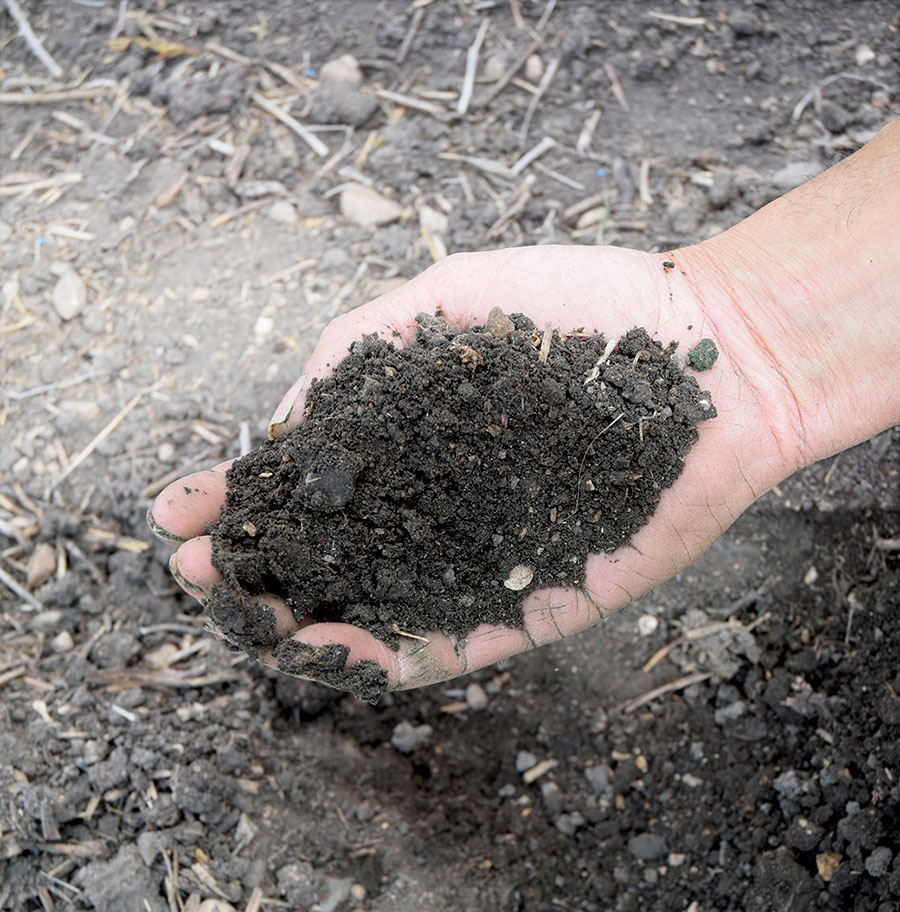Are we measuring the right soil nitrogen pool?
Key result:
Researchers wanted to see if soil protein, extracted using the ACE/MACE methods, is an appropriate measure of the soil nitrogen that potentially becomes available during the growing season. They found only a weak correlation, and concluded that current soil test recommendations provide an acceptable measure of biologically available nitrogen.
Project title, principal investigators:
“Revisiting nitrogen fertilizer recommendations for Saskatchewan: Are we measuring the right soil nitrogen pool?” Richard Farrell and Fran Walley, University of Saskatchewan
Funding:
SaskCanola, SaskWheat, Western Grains Research Foundation, Alberta Wheat Commission
Full report:
To find the full report, go to SaskCanola’s research page at saskcanola.com/research-results and search for the project title.
With nitrogen being so important to crop production, lack of appropriate soil nitrogen tests have been criticized as being a limitation to developing sound fertilizer recommendations. Soil testing is meant to measure how much nitrogen is in the soil that will supply the crop during the growing season. However, what is typically measured is the soil inorganic nitrogen (a product of mineralization), and then predictions are used to estimate how much additional nitrogen will be released depending on the soil zone. Although measuring mineralization during a growing season could determine actual nitrogen release, it is a matter of too little too late – so an estimate of potentially mineralizable nitrogen is required.
Research has been done in the past but no test developed through past projects has been widely adopted. There needs to be an affordable, easily reproducible, and chemically defensible test that measures the substrate for nitrogen mineralization (soil protein), and not the product (inorganic nitrogen). Soil proteins are the key substrate that contributes to the plant-available nitrogen pool – a pool that contains both organic monomers, which are not measured by typical soil N tests, as well as inorganic nitrogen.
Soil nitrogen tests currently used in Saskatchewan usually involve the use of a chemical extractant that determines the amount of plant available nitrate nitrogen in the soil or short-term incubation release. This provides only a snapshot of the amount of inorganic nitrogen (nitrate and/or ammonium) either in the inorganic pool or entering this pool. Mineralizable nitrogen and proteins could be a better measure.
Researchers have found a soil protein pool that is believed to represent potentially mineralizable nitrogen and that can be rapidly tested in a lab. The standard method for testing soil protein is referred to as Autoclaved citrate extractable (ACE) protein, however this method is not regularly used for commercial soil tests as it is time consuming. Most labs are equipped with microwave systems that can provide the high temperature and pressure needed for soil protein extraction. The researchers wanted to determine whether microwave-assisted extraction of soil protein yields the same results as the standard ACE method. They would then optimize the method, and demonstrate that this soil protein pool is directly related to potentially mineralizable nitrogen and can provide a basis for improved fertilizer recommendations.

Results
Researchers started by assessing the ACE soil protein concentration in 55 different soils in Saskatchewan. Microwave-assisted citrate extractable (MACE) soil protein was determined on a sub-set of these samples and compared to ACE protein levels. Soil protein concentration was not affected by extraction method. Moreover, MACE soil protein extraction can be performed in half the time of the ACE method, without affecting protein recovery. Results showed strong correlations between soil protein nitrogen, total soil nitrogen and soil organic carbon, but only a weak correlation between soil protein nitrogen and inorganic nitrogen.
This research found the soil protein pool extracted using the ACE/MACE methods are not an appropriate measure of the nitrogen that potentially becomes available during the growing season. Researchers concluded that the ACE/MACE methods of soil protein are not suitable as a seasonal nitrogen availability index. Since statistically significant yield increases often were not observed above the soil-test recommended rate of nitrogen, this suggests that current soil test recommendations provide an acceptable measure of available nitrogen, with the understanding that weather strongly influences nitrogen responses. Researchers have also indicated that more research is needed to develop a rapid chemical test to determine biologicially-available soil nitrogen.





